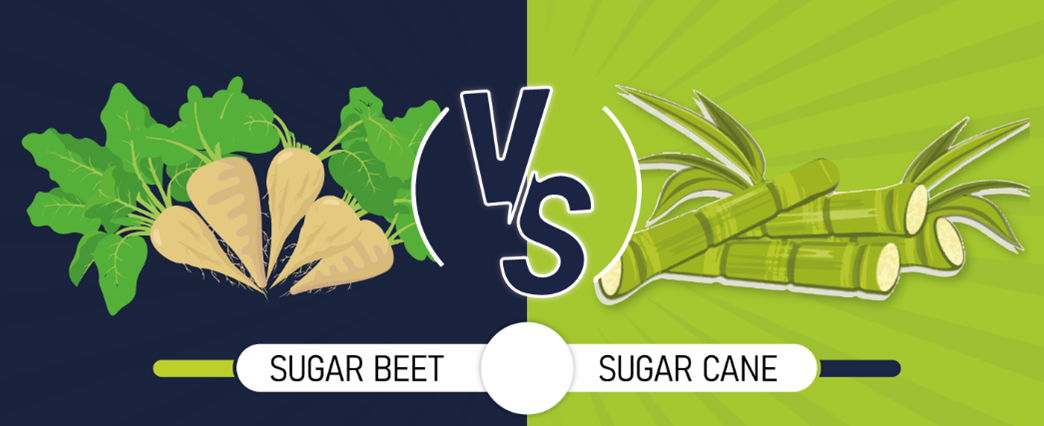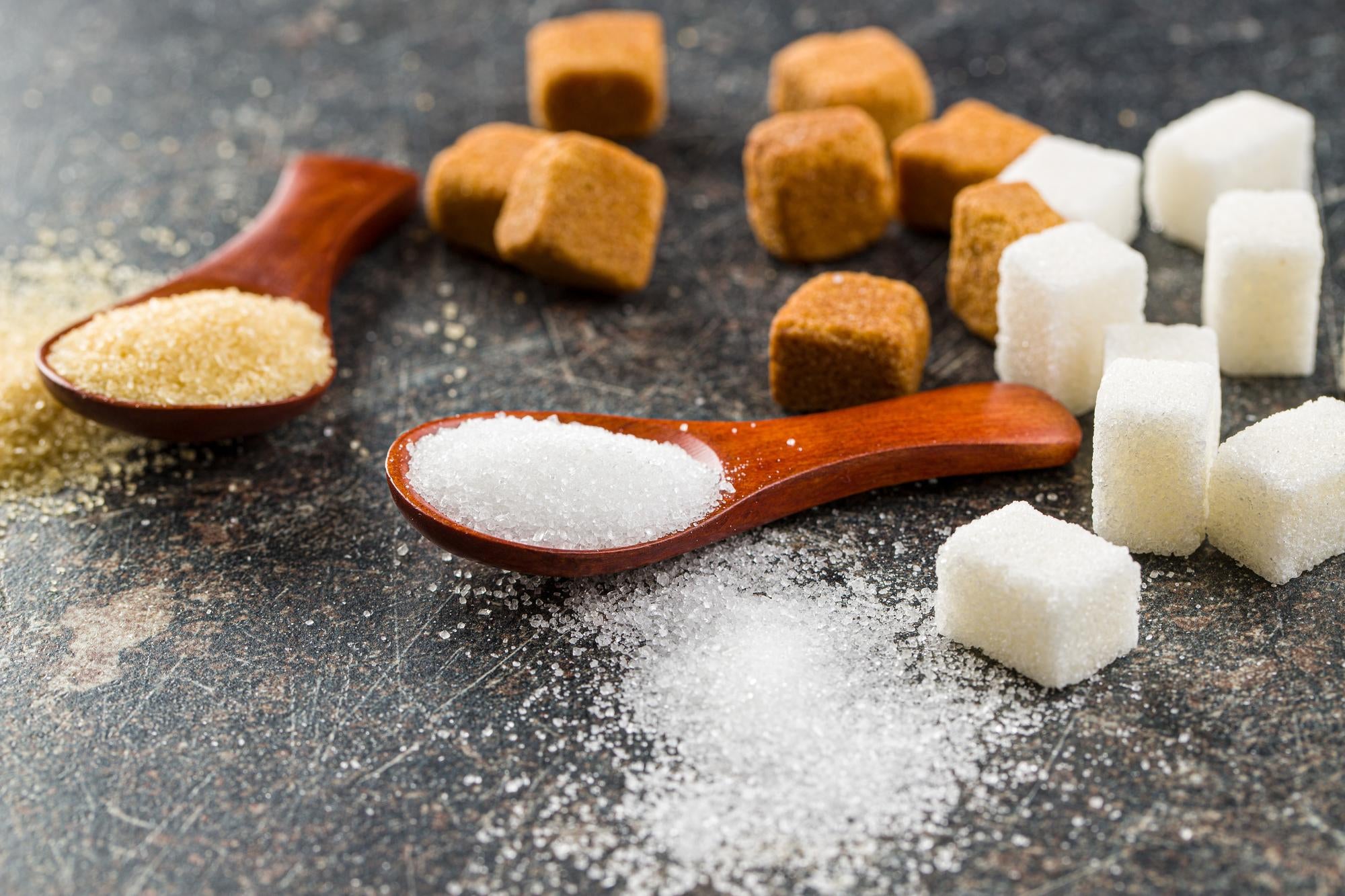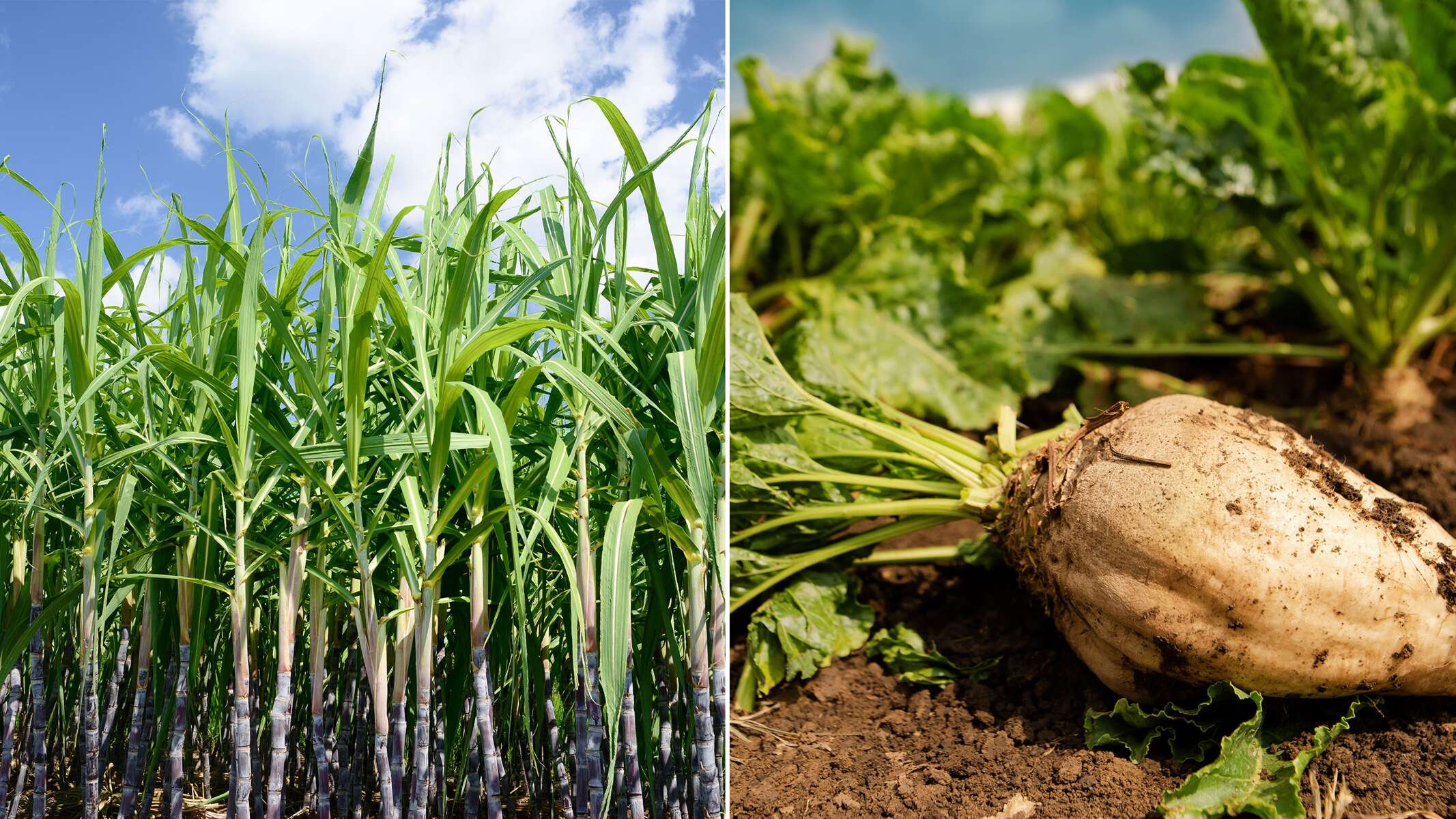How to decide between sugar beet vs sugar cane for climate-specific cultivation success
The Relevance of Sugar Beet Vs Sugar Cane: a Closer Take A Look At Their Manufacturing Processes and Applications
The relevance of sugar beet and sugar cane extends past their duty as sources of sucrose. Each crop includes distinct producing procedures that influence their applications throughout numerous industries. While sugar beet supports not simply food manufacturing yet also biofuels and fertilizers, sugar cane mainly offers the food market with important byproducts. Understanding these differences discloses how each plant forms agricultural economic climates and market practices internationally, triggering more expedition right into their unique contributions.

Review of Sugar Beet and Sugar Cane
Sugar beet and sugar cane are 2 key resources of sucrose, each with distinctive characteristics and cultivation methods. Sugar beet, a root veggie, grows in pleasant environments - Sugar beet vs sugar cane. It is grown mainly in the Northern Hemisphere and calls for well-drained dirt. The plant commonly expands to an elevation of regarding 18 inches, with a white, fleshy root including about 15-20% sucrose. On the other hand, sugar cane is an exotic yard that prospers in cozy, damp conditions. It can reach heights of approximately 12 feet and contains high, jointed stems that store sucrose focus varying from 10-15%. The growing of sugar cane is labor-intensive and typically involves hands-on harvesting. Both crops offer as necessary agricultural commodities, providing raw products for sugar production and various by-products. Their cultivation techniques significantly impact neighborhood economic situations and worldwide sugar markets, making them integral to the farming landscape
Collecting Methods for Sugar Beet and Sugar Cane
Harvesting methods for sugar beet and sugar cane differ noticeably because of the distinct attributes of each crop. Sugar beet gathering typically utilizes customized machinery understood as beet farmers, which effectively root out the beetroots from the soil while lessening damages. These machines use a collection of blades to reduce the tops and lift the roots, making certain that the beets remain undamaged for processing.In comparison, sugar cane harvesting frequently includes 2 main methods: hands-on cutting and mechanical harvesting. Hand-operated harvesting, still prevalent in some regions, needs employees to reduce the cane stalks by hand making use of machetes. This method enables discerning harvesting yet is labor-intensive. Mechanical harvesters have acquired popularity, utilizing revolving blades to cut and collect the stalks quickly. Both methods aim to optimize yield and high quality, with mechanical harvesting progressively taken on to meet rising production demands effectively.
Processing Techniques for Sugar Beet
After being gathered, sugar beets go through a series of processing steps to extract sucrose efficiently. The very first step entails cleaning the beetroots to eliminate dirt and pollutants. Next, the beets are cut right into slim strips called cossettes, which increases the surface for removal. These cossettes are then subjected to warm water removal in a diffusion process, allowing sucrose to liquify right into the water.Following extraction, the juice includes pollutants and is clarified using lime and heat to speed up solids. The cleared up juice is then concentrated via dissipation, getting rid of excess water and boosting sugar concentration. To take shape the sucrose, the focused juice goes through further dissipation and air conditioning, developing sugar crystals. Finally, these crystals are divided from the remaining syrup via centrifugation, dried out, and packaged for distribution. This technique guarantees a high yield check it out of sucrose while maintaining the high quality of the end product.
Handling Techniques for Sugar Cane
Processing sugar cane entails a series of actions developed to extract sucrose properly. The process starts with harvesting, where mature sugar cane is reduced and transported to refining centers. When at the mill, the cane undergoes cleaning to eliminate impurities. The following step is crushing, where mechanical rollers extract juice from the fibrous stalks.This juice is after that cleared up making use of warmth and lime to remove put on hold solids and contaminations. Complying with explanation, the juice is vaporized to concentrate the sugar content, leading to a thick syrup. The syrup undergoes crystallization, where sugar crystals create as the syrup cools. These crystals are divided from the remaining molasses with centrifugation.Finally, the sugar is dried out and packaged for distribution. This extensive handling method warranties that sugar cane produces a top quality item, suitable for different cooking and commercial applications, while making best use of the extraction of sucrose from the raw product.
Nutritional Distinctions In Between Sugar Beet and Sugar Cane
The contrast in between sugar beet and sugar cane expands beyond their processing techniques to incorporate substantial nutritional distinctions. Sugar beet includes not only sucrose yet also a series of nutrients, consisting of vitamin C, potassium, and magnesium. These nutrients contribute to its potential health benefits, such as supporting immune function and preserving electrolyte balance. In comparison, sugar cane generally gives sucrose with minimal levels of crucial nutrients.Additionally, sugar beet has a greater fiber content, which can aid in digestion and advertise satiation. The existence of anti-oxidants in sugar beet might additionally supply safety results versus oxidative stress and anxiety, a factor linked to numerous persistent diseases. While both resources are largely made use of for sugar manufacturing, the image source dietary profiles suggest that sugar beet may offer added health benefits contrasted to sugar cane. This difference is essential for customers looking for more than simply sugar in their diet regimens.
Applications of Sugar Beet in Numerous Industries
A range of markets leverage sugar beet for its versatile applications past sugar production. In the food industry, sugar beet offers as a vital component in creating various refined foods, including sweets and baked items, due to its all-natural sweetness. Additionally, the pulp stemmed from sugar beet is made use of as animal feed, providing a nutrient-rich resource for livestock.In the biofuel industry, sugar beet is increasingly recognized for its possibility in creating bioethanol, contributing to eco-friendly energy solutions. The farming sector gain from sugar beet's by-products, which can be used as organic plant foods, enhancing dirt health and wellness and fertility.Furthermore, sugar beet extracts are used in pharmaceuticals and cosmetics, where they operate as natural sugar and humectants. These diverse applications highlight sugar beet's duty as a useful resource in improving sustainability and development throughout multiple markets, reinforcing its significance in modern manufacturing practices.
Applications of Sugar Cane in Numerous Industries

Regularly Asked Questions
What Environmental Impacts Are Related To Sugar Beet and Sugar Cane Production?
The ecological influences of sugar beet and sugar cane production include dirt destruction, water usage, pesticide application, and habitat interruption. These factors contribute to environmental inequalities, elevating concerns about sustainability in agricultural practices connected with both crops.

How Do Sugar Beet and Sugar Cane Contrast in Terms of Economic Practicality?
The financial stability of sugar beet and sugar cane differs based upon aspects like geographical area, manufacturing prices, and market need - Sugar beet look here vs sugar cane. Both plants offer distinct advantages, affecting farmers' choices concerning growing and investment in various areas
What Are the Key Regions for Sugar Beet and Sugar Cane Farming?

Just How Does Climate Affect the Development of Sugar Beet and Sugar Cane?
Climate considerably influences the growth of sugar beet and sugar cane. Sugar beets thrive in cooler temperature levels, while sugar cane requires warm, tropical conditions. Sugar beet vs sugar cane. Both crops depend upon ample rains and sunshine for excellent development and yield
Are There Any Significant Health Concerns Connected To Consuming Sugar From These Sources?
Health concerns related to sugar consumption consist of excessive weight, diabetes mellitus, and cardiovascular disease. Both sugar beet and sugar cane-derived sugars can add to these concerns, especially when consumed in excessive quantities, no matter of their resource.